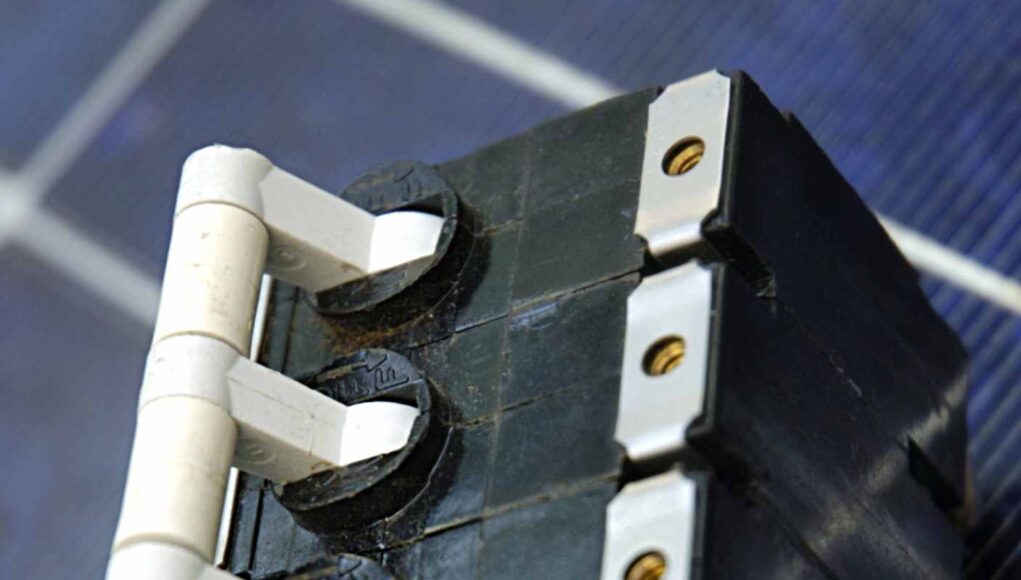Circuit overloads, short circuits, and ground faults are the most common causes of circuit breaker tripping. To assist you in resolving your circuit breaker and electrical system concerns here is some information on the distinctions between a circuit overload, a short circuit, and a ground fault.
Nothing happens when you want to plug something in or grab a switch. Your circuit breaker has tripped for the second time. You may just reset the circuit breaker whenever it trips. Alternatively, you can figure out what’s causing the issue and repair it once and for all. To assist you in resolving your circuit breaker and electrical problems here is some information on the distinctions between a circuit overload, a short circuit, and a ground fault.
How can you tell if a circuit breaker has tripped?
A tripped circuit breaker might cause a power outage in a specific region of your home rather than the entire house or if many outlets in a room aren’t working.
Circuit breakers or fuses protect the electrical circuits in your home. All households should know the position of the electrical panel or fuse box, and the aperture should be freely accessible and not obscured by shelving, boxes, or furniture. Take the time to identify each circuit breaker or fuse and the region it regulates if they aren’t already identified. If a circuit or fuse trips or blows, this will save you time and effort. If one room, such as the kitchen, has two breakers or fuses, note which part of the kitchen each of the two switches controls. You might, for example, call one switch “kitchen appliances” and the other “kitchen counter outlets” or something like that.
The switch handle will have shifted between the on and off positions and may show a red area notifying you that the circuit breaker has tripped because it has surpassed its maximum amperage (that’s how current is measured, in amps). Depending on your electrical panel, the “trip” may only result in a tiny handle movement, and you’ll have to examine the switches attentively to figure out which one has tripped.
What is the procedure for resetting a tripped circuit breaker?
Please turn off the breaker by sliding the switch or lever to the off position, then turn it back on to reset a tripped circuit breaker. It’s a good idea to step back or to the side of the panel for safety reasons, just in case the breaker sparks when it’s moved, or wear safety goggles. It’s also good to keep a flashlight and batteries near your electrical panel if the power goes out. To establish what may have overloaded the circuit or caused the trip, reset the circuit breaker for a few minutes before removing and plugging objects.
How does a circuit overload occur?
When an electrical wire/circuit receives more amperage than it’s designed to take, it might become overloaded. Loose or corroded wires or connections can also cause it. On the other hand, an overloaded circuit frequently happens as a result of too many devices being put into the circuit. Suppose your microwave, for example, continues tripping the circuit breaker every time you switch it on. It may be hooked into the same circuit as one or more major appliances, and the circuit lacks the extra amperage that a microwave requires. If a circuit trips due to overloading, consider unplugging anything from the circuit and using a different circuit for electrical power instead.
Before resetting the breaker, disconnect all of the equipment on the circuit to establish what caused the problem. Turn on or plugin items one at a time after reset and rest for a few minutes to see what may have caused the overload. If circuit overloads frequently occur in your house, you may need to create a new dedicated circuit and outlet for the area to accommodate the amperage load. Put significant appliances and household systems, such as your HVAC, on their own, dedicated circuits to avoid circuit overloads.
Circuit breakers are installed in your electrical system to safeguard you against the risks associated with overloads. Every electric line has a little device called a circuit-breaker at the beginning. It has the ability to identify an unusually high current flow and reduce the current to the line to avoid overheating.
Short circuit
When a hot, active electrical wire and a neutral wire come into contact, a considerable quantity of current overloads the circuit. A short circuit should always trip the breaker or blow a fuse, and it may also result in sparks, popping sounds, and potentially smoke. It might also be due to poor connections, a slipped cable, or even damage caused by animals nibbling on wires. A malfunctioning electrical switch, receptacle, fixture, appliance, socket, or wire can produce a short circuit. You can try to locate the short circuit or get assistance from an experienced electrician.
Short circuits are dangerous since the current flow generates high temperatures, which can cause a fire hazard, so continue with caution and get expert help if you suspect your house has a problem, especially if you can’t discover the source.
Ground Fault
When a hot or active wire makes contact with the ground wire, a grounded component of the junction box, or a grounded region of an appliance, a ground fault occurs (Hot wires are usually black, neutral wires are usually white, and ground wires are usually green). When a hot and ground wire makes contact, a high quantity of current flows through the circuit breaker, causing it to trip.
Ground Fault Circuit Interrupters (GFCI) are required by the National Electrical Code (NEC) in many home sections to avoid electrical shocks and fires, including kitchens, baths, outdoor areas, and other living spaces. Ground faults occur when equipment is broken or malfunctioning, and they can be dangerous because live electrical elements are no longer effectively insulated from incidental contact.
Why does your circuit breaker trip all the time?
When a circuit breaker trips regularly, what causes it to do so? If your circuit breaker continues tripping, there’s probably a problem with the circuit. It’s possible that one of the appliances or the wiring has a short circuit. The breaker may be tripping due to a ground fault. There may be a circuit overload. It might also indicate that your circuit breaker box is failing or that the breaker isn’t appropriately suited for the current flowing through it.
Benefits of Breaker Tripped
Prevents Electrical Fires
One of the most significant benefits of a breaker tripped is that it prevents electrical fires. When a circuit is overloaded, it generates excessive heat, which can lead to a fire. A breaker tripped cuts off the power supply, preventing the circuit from overheating and potentially starting a fire.
Protects Appliances
Another benefit of a breaker tripped is that it protects your appliances from damage. When a circuit is overloaded, it can damage the electrical components in your appliances. A breaker tripped shuts off the power supply, preventing any damage from occurring.
Saves Energy
A breaker tripped also helps you save energy. When a circuit is overloaded, it consumes more energy, leading to higher electricity bills. A breaker tripped shuts off the power supply, reducing energy consumption and saving you money.
Identifies Electrical Problems
A breaker tripped also helps to identify electrical problems. If a breaker is frequently tripping, it may indicate an issue with your electrical system. You can prevent further electrical hazards by addressing the underlying issue and potentially save money on repairs.
Apart from this, if you are interested to know more about Federal Pacific Electric Panel then visit our TECH category.








